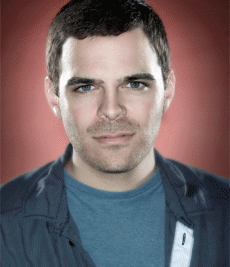
How Creative Cloud Got the Film—the First Feature Drawn from the Humorist's Work—to Sundance on Time
Writer/director Kyle Patrick Alvarez is the first to admit that "C.O.G.," a humorous essay from the New York Times best-selling book Naked, is not the funniest thing David Sedaris has ever written. But it is one of the more developed character studies he has penned, and for this reason, Alvarez says, it was ripe for a film adaptation.
The only problem was getting the green light from Sedaris, a notorious hold-out when it comes to optioning his work. After a few failed attempts, Alvarez sent the author his first and only film, Easier with Practice, an unconventional phone-sex affair that is much more humane than its subject matter suggests. That finally got the quirky author's attention.
Sedaris, however, had no interest in following the production—also called C.O.G.— in progress and was happy to give Alvarez free rein on set and in the edit suite. The film's Sundance premiere, in fact, was the first time the author saw Alvarez's interpretation. C.O.G. had its day-and-date release in late September and is now playing in select theaters and on demand.
Alvarez edits his own films (under the pseudonym Fernando Collins), making him innately curious about evolving ways to streamline post workflows and collaboration while still on set. He cut C.O.G. on a laptop with an 8 TB work drive and says he gravitated to Adobe Creative Cloud early on as a way to save on production costs. It was instrumental in getting both sound and picture screen-ready for Sundance this January. Take a look at the film's trailer, then hear what Alvarez has to say about the perils and pleasures of adaptation and how technology can aid the creative process.
StudioDaily: I watched your films in chronological order so I could gain some insight into what caught David Sedaris' eye after you sent him a copy of your first film, Easier with Practice. Why do you think he said yes?
Kyle Patrick Alvarez: Part of my pitch to him was also, "This is not really going to be you on the screen. Think of it more like this story that you happened to have written." The interesting thing is that David Sedaris knows Davy Rothbart, who wrote the piece my first movie was based on and is another This American Life regular. So after watching Easier with Practice, David saw that the character I'd written for the film was so different from how Davy is in real life. I think he saw how I just took the story and made a film out of it that wasn't necessarily indebted to a full-on portrayal of the original person. I said to David, "Look, you wrote this story that I really like. Even if it had been written by someone no one had ever heard of, I'd still be trying to make it." My aim was never to throw David Sedaris up on screen. He could see that I'd done that once before and how I did that. He also liked the film; he's got really interesting tastes in movies. But I'm just glad he found the whole thing compelling enough to say yes to me.
What was it specifically about "C.O.G." that drew you in?
In some ways, what appealed to me most was just how different "C.O.G." was from all of his other work. It's still a very funny story but it had all these other things that resonated with me personally. I grew up in the midst of a lot of similar conflicts—certainly not to the extremes conveyed in the essay—but I've had a lot of the same conflicts with sexuality and religion. There's a brutal honesty in there that really spoke to me. I first read it in high school and I thought the story handled those subjects and scenes so well without ever being pretentious or overt or didactic, and I just loved that. At the same time, it was funny and very human. A lot of his stories also typically focus on one or two characters and this one has three or four and each one was so richly drawn. I think it's the longest if not one of the longest things he's ever written.
It reads more like a novella.
That's why it's not on his audiobooks. At the premiere of the film, he brought this up in his opening remarks. He never recorded it because every time he got around to doing it he'd skip over it because it was so long. I'd never claim that it's his best story or even his funniest. For me, it was the one that I could best adapt and turn into a film, one that came from me as much as it did from him.
Did you worry that your version of Sedaris wouldn't resonate with Sedaris fans?
It's a tricky thing. Of course it's very deliberate that although the character is called "David," I never say Sedaris in the entire movie. The tricky part is you're taking someone who is so well known for one thing and making a movie that is kind of a different thing. I always wanted the characterization to be in spirit, not verbatim. David exists out there, as does his writing and his performances of it. It's not the movie's job to be wish-fulfillment, but my goal was to make a movie that was true to me, and I think at the end of the day that's also what David appreciates about the film and what got him to give me his approval in the first place. Granted, the marketing is going to throw his name all around it, but I don't think the film needed to be indebted to him. I wanted it to exist in its own way.
What was his reaction when he saw C.O.G. for the first time at Sundance?
It was so nerve-racking for me. I offered to screen it for him ahead of time, but he was really more curious to see it with everyone else in the audience that night in Park City. I honestly can't remember what he said to me afterward; I think I blocked that whole thing out because I was so anxious, but he's continued to be so supportive of the film and kind to me. I really feel that I have his blessing.
The film was shot with the Epic and recorded in 5K in Redcode Raw. How did you come to embrace an Adobe-centric workflow?
I'm my own editor. I use a pseudonym, mostly because I've never aimed to be one of those filmmakers who does everything and I don't really want to be a multi-hyphenate. I became an editor partly out of financial necessity, but I also really love it. On my first film, we shot on the Red One and the workflow was still very much in flux. We were probably one of the first five or six features to be shot and finished on Red. At the time, to do dailies, it took a whole day to transcode that footage. And by the time I got to work on it, I discovered that this idealized vision I had of a new indie digital workflow—that would seamlessly allow the dailies to overlap with shooting and by lunchtime you'd be cutting what you shot—didn't really exist yet. It took me a few years to get this movie together financially, so I had time to dip back in the tech world and see what was going on. Even before I understood what Creative Cloud was, I saw what Adobe had been doing. Being able to edit in Red Raw in Premiere was a game changer. Final Cut X eventually added it but by that time, I was already well into production. That's what blew my mind: handling 5K raw footage without any codecs or intermediates and doing it right away. This was the way I'd imagined it would be years earlier. For me, it was the ideal in so many ways. When I went to buy Premiere—I'd never cut with Adobe before—I soon discovered that the amount of money Creative Cloud would save our production was huge. It made sense to have access to everything, from Premiere to After Effects to Audition, at all times. Honestly, I admire companies that take on a big risk with a new pricing model, and I thought that model made enormous sense for a content creator like me. I remember the day the producers said, "Wait, how much is it going to cost us? That's it?" They were as excited as I was. It saved us money, it saved us loads of time and it saved our asses a couple times on set.
How so?
Well, I had an assistant editor logging footage while we were shooting, and at lunchtime I would go and look at things. There were a couple times where we would ask, "Did we really put that in the right place or did that really cut together in the right way?" You're still on location and you have time to grab a quick little pick up. We never would have been able to go back and shoot anything on our budget. So to have your workflow not only work technically very well but also aid the creative process on set and actually improving scenes and moments. A couple of times, when we were at the same location over two days, I knew I could easily go back through the previous day's footage and figure out how best to showcase actors in the assembly of a scene I was setting up that day. That's when it gets really exciting, when you don't have to look at it as this great divide between production and post-production but can rather look at it as one whole, organic piece that you work on at the same time.
Did you get into digital production in film school?
I've always wanted to be a writer/director but I've always had a soft spot for technology. When you're shooting a student film and you have no money and you're begging your friends for help, you're not really learning about how it's done in the real world. When I was editing during film school, however, I realized I was learning a valuable skill that would carry over into feature work. That's when I realized that I could cut my films on Final Cut on my very affordable iMac. Having time with my footage taught me so much as an editor and also as a director. When I first moved to L.A., I started picking up jobs as an editor for promotional and corporate videos. That was my lifeline financially, and it still is from time to time. I love it and it pays the bills. When it came time to do my first film and we were trying to find a way to cut corners and save money, I decided to edit it. I actually enjoyed editing my film much more the second time around than I did the first. By the time I got to C.O.G., I had a much more objective point of view and a more controlled view of the process. It was much easier for me to switch over to being an editor and back again to directing.
What was most painful about the experience the first time?
Making cuts to the things you love, and learning as you go. It was a much slower process overall. This time, when I was properly editing the film after production, I cut like three scenes right away because I knew they didn't work. I felt I had a much surer handle this time on what needed to be in there and what needed not to be in there.
Do you storyboard your films?
On my first film I did a lot of storyboarding. That's what film school taught me: you prepare, and prepare and prepare. It worked well but I also learned how constricting that can be to an actor, and C.O.G. was so much more about performance than it was about mood or look or execution. We were prepared and knew what we needed to get but I also went into scenes really open-minded and made sure the actors in each scene could come at the material the way they needed to.
Any other big challenges during production and post, beside the initial challenge of getting David Sedaris to sign off on the project?
You know, our biggest was probably time. We shot the movie in 18 days in over 30 locations, so it was a lot of moving around. Post on the film, from wrap to Sundance, was a mere six weeks. I think that's one of the fastest turnarounds Sundance has ever had. I was grateful for that deadline, though, because I definitely think it helped the movie. It helped me plow through it and work more quickly. I made decisions confidently and I also was able to make the switch from Final Cut and get up to speed in record time. I think that says a lot about how well the software worked and how well it fit into a workflow with our colorists.
The 5K files went out to a 2K master and then were graded?
Yeah, we went down to 2K before the grade but all the 5K stuff was on hand if we wanted to crop in or make any adjustments. We could have finished the whole thing in a higher resolution, of course, but it just would have cost us a lot more.
What's your feeling about the film's day-and-date release?
For a small, challenging movie like this, it's a way to equalize the playing field. We actually broke into the top 12 on iTunes, which says a lot when you think of all the movies that are available on iTunes. We never would have been able to do that in theaters with a movie like this. Everybody always fantasizes about getting a huge theatrical rollout for their film, but day-and-date is the right kind of release for this film. If you're not embracing what technology has to offer and bringing your movie to all audiences all at one time, I think you're doing a disservice to your film.
In your first film, there were a lot of clever visual gags. Were they real locations, like the "U-Pump-It" gas station?
That's Albuquerque for you, as fans of Breaking Bad know well. It was all real, and I did worry that people were going to think we made some of it up. Looking back, I think I gave in to the quirkiness of Albuquerque a little too much on that first film. On this movie, we were in Oregon, which is equally rich with quirky, interesting places but you know what? I was determined that the film not rely on quirk. I knew that it had to feel more real than it did a fantasy. We had to fight against it, too. Oregon certainly has plenty of similar opportunities for parody (hello, Portlandia!).
Did you score this film differently than your first?
My first film was all indie soundtrack and I wanted this one to be very different, for the music to have a unique signature in which the music was driving the pacing instead of the emotion. I wanted to use a lot of minimalist composer Steve Reich's music, but there were certain scenes where we just couldn't find pieces of his that fit. I brought in a friend of mine to create additional music that fit into that mold. Before we went into a recording studio, we just loaded up Adobe Audition, which I'd never used before, and just started recording stuff in my office. We did all our temp tracks that way and recorded things we probably wouldn't have been able to do. Neither of us had used editing software before, actually, so we were learning all this from scratch in a short period of time, but it all worked out really well.
How did other Adobe software figure into that workflow?
Our special effects company used After Effects, particularly [for] Denis O'Hare's missing leg, but [also] a lot of hidden effects for continuity. And Photoshop played a huge part of our initial marketing effort. When we got into Sundance, we didn't have any money left to market the film there, so our production designer built a one sheet that we could take to the festival, and we put together a press book using Photoshop and Illustrator. The final one sheet was created by Focus Films. But nowadays, you have to be responsible for everything as filmmaker. Unless you have money or a bigger budget, you have to do these things yourself or else the content just won't exist.
Crafts: Editing Post/Finishing Shooting
Sections: Creativity
Topics: Article Q&A adobe after effects Adobe Creative Cloud Adobe Photoshop Adobe Premiere David Sedaris Fernando Collins Kyle Patrick Alvarez red epic
Did you enjoy this article? Sign up to receive the StudioDaily Fix eletter containing the latest stories, including news, videos, interviews, reviews and more.
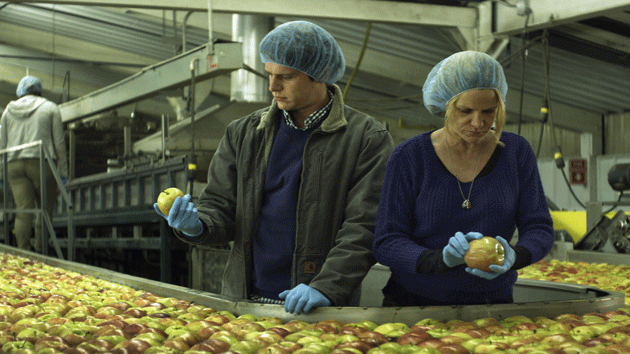
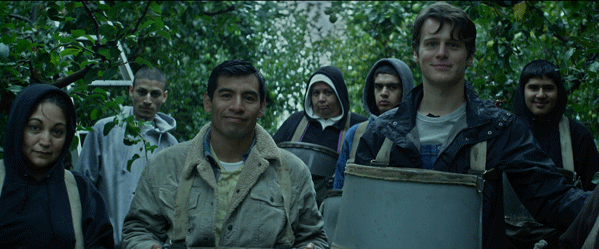
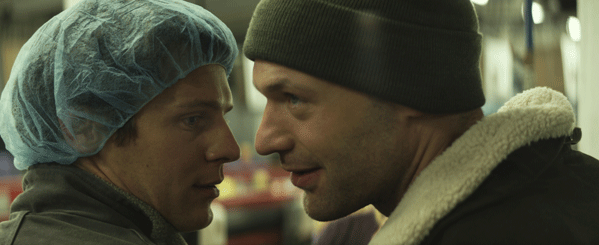
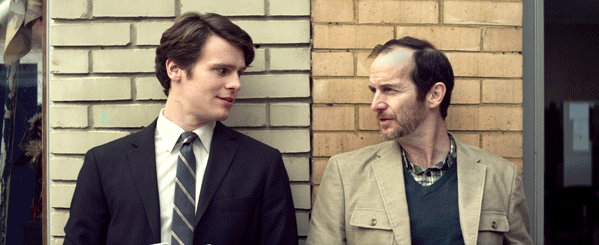










Thinking of signing up for the @adobe Creative Cloud? Some of these horror stories might change your mind. http://forums.adobe.com/community/creative_cloud